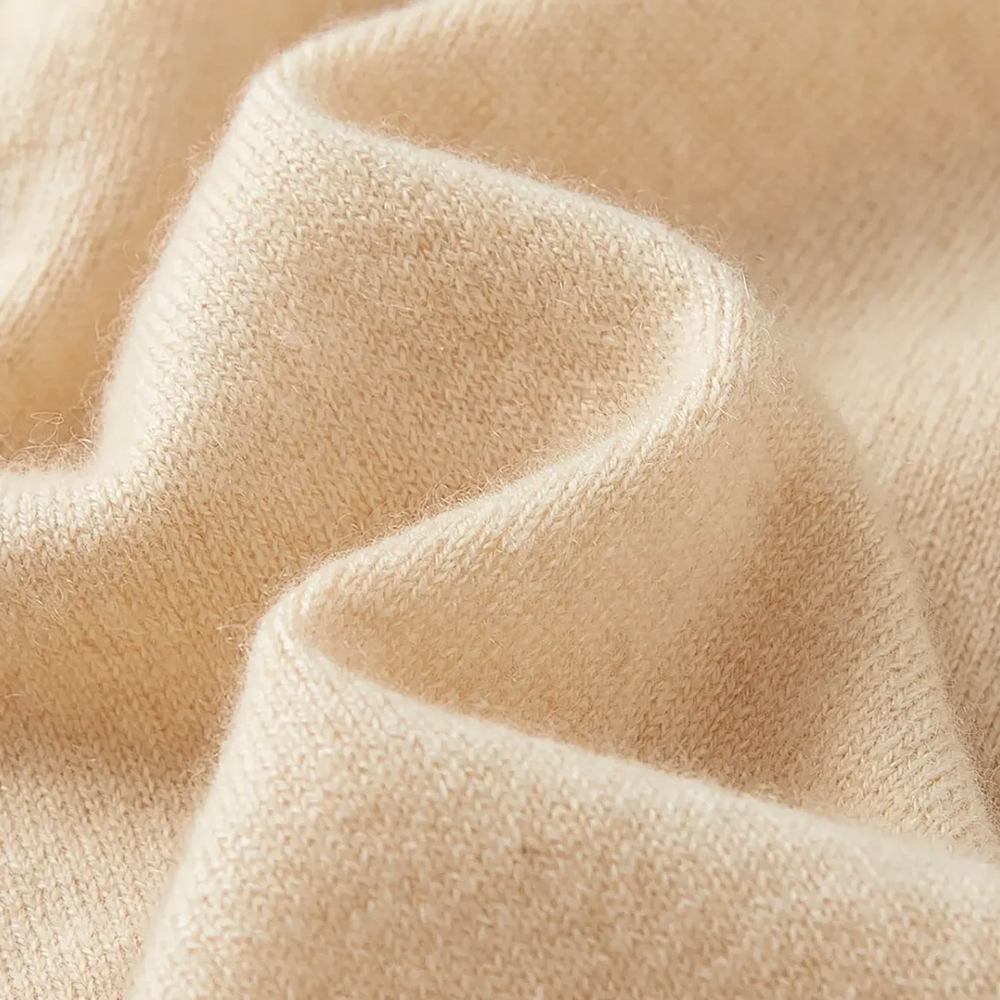You’ve probably held a chunky wool sweater and thought, “Cozy, but bulky.” Or put on a thick cashmere coat and felt weighed down. For decades, the textile industry (and consumers) equated warmth with weight—until now. As a clothing exporter who’s witnessed this shift firsthand, I’m here to unpack the revolution: Today’s premium wool and cashmere aren’t just warm—they’re lightweight, luxurious, and redefining what “comfort” means. Let’s trace this cognitive upgrade from tradition to innovation.

The Old Paradigm: Why “Bulky” Was Once “Better”
In the 20th century, warmth was measured in grams per square meter (GSM). A 300GSM wool sweater? “Warm.” A 500GSM cashmere coat? “Ultra-cozy.” But this mindset ignored a critical flaw: thickness sacrificed comfort. Bulky fabrics restricted movement, felt scratchy against the skin, and looked outdated—all while failing to address modern demands for versatile, everyday luxury.
Consumers tolerated it because alternatives were limited. But as global fashion trends shifted toward minimalism and “quiet luxury,” the industry faced a reckoning: Warmth couldn’t come at the cost of style or comfort.
The Tech Breakthrough: How “Light Warmth” Became Possible
The game-changer? Material innovation and advanced processing. Here’s how brands (including our clients) transformed wool and cashmere:
1. Fiber Selection: Smaller, Smarter, Stronger
Traditional wool uses coarser fibers (25–30 microns), while cashmere averages 14–19 microns. Today, we source ultra-fine merino wool (15–18 microns) and baby cashmere (under 14 microns)—softer than silk, lighter than down, but with 30% better insulation than standard fibers.
Example: A client in Milan switched to 16-micron merino for their fall line. The result? A 220GSM sweater that feels “like a second skin” but retains heat 2x longer than their old 320GSM bulkier designs.
2. Weaving & Knitting Techniques: Less is More
New looms and knitting machines enable precision engineering:
- Open Weaves: Structured but airy, allowing air circulation while trapping body heat (e.g., “breathable tweed” for transitional seasons).
- 3D Knitting: Seamless, lightweight layers that conform to the body without bulk (popular in tailored coats and dresses).
- Double-Faced Fabrics: Two layers of ultra-fine wool/cashmere bonded lightly, doubling warmth without adding weight.
3. Treatment Processes: Softness Without Compromise
Traditional dyeing and finishing often damaged fibers, making them stiff. Modern methods like cold-pad-batch dyeing (preserves fiber integrity) and enzymatic washing (reduces pilling) keep fabrics supple. Our partner in Japan even uses nanocoating to repel stains—critical for lightweight garments meant for daily wear.
Consumer Demand: Why “Light Warmth” Sells
The shift isn’t just technical—it’s cultural. Here’s what today’s buyers want:
- Versatility: A lightweight cashmere scarf that pairs with both a blazer and a T-shirt.
- Travel-Friendly: A wool coat that folds into its pocket without losing shape.
- Sustainability: Ultra-fine fibers require less raw material (e.g., 1kg of baby cashmere = 3–4 goats vs. 10+ for standard cashmere), aligning with eco-conscious values.
Market Data: A 2024 report by Textile Exchange found that “lightweight premium wool/cashmere” sales grew 28% YoY in Europe and North America, outpacing traditional bulky lines by 19%.
FAQs: Your Questions About Light Warm Wool & Cashmere, Answered
Q: Is “light warm” fabric as durable as traditional wool?
A: Yes—with proper care. Ultra-fine fibers are stronger per gram than coarser ones (thanks to tighter molecular bonds). Avoid harsh detergents and high heat; hand-wash in cold water, lay flat to dry, and store folded (not hung) to prevent stretching.
Q: How do I know if a garment is truly “light warm” or just thin?
A: Check the fiber content (look for 15+ micron merino or 14+ micron cashmere) and GSM (180–280GSM for sweaters; 250–350GSM for coats). Our export team provides lab reports for each batch, verifying fiber fineness and thermal efficiency.
Q: Can lightweight wool/cashmere handle cold climates?
A: Absolutely. The key is layering. A 220GSM merino base layer + a 280GSM cashmere mid-layer traps heat effectively—even in -5°C. Our clients in Scandinavia use this combo for winter outdoor gear.
Q: Why is “light warm” wool/cashmere more expensive?
A: Ultra-fine fibers are rarer (e.g., only 3% of global cashmere meets “baby cashmere” standards) and require specialized processing. But the cost pays off: longer lifespan, better comfort, and timeless style justify the investment.
Wrapping Up: The Future Is Light, Warm, and Luxurious
The era of “bulky = warm” is over. Today’s wool and cashmere aren’t just fabrics—they’re a statement of sophistication, blending science, sustainability, and style. At Sheen, we’ve partnered with mills in Italy, Mongolia, and Japan to bring these innovations to global markets. Whether you’re a boutique brand curating a “quiet luxury” line or a retailer targeting eco-conscious shoppers, we’re here to supply the next generation of premium textiles.
Curious to explore our light-warm wool and cashmere collections? Browse our latest tech sheets, request fabric swatches, or schedule a virtual factory tour.
Stay ahead of trends. Stay focused on quality. Stay Sheen.

